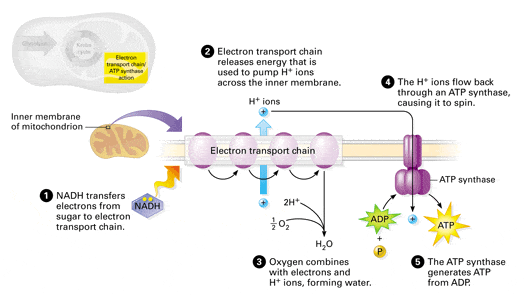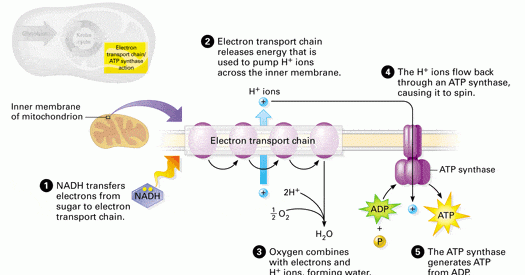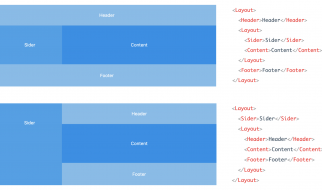Cellular Respiration gives both plant and animal cells the useable energy, aka ATP, that they need to do stuff. This is the overall equation:
C6H12O6(glucose) + 6O2 ? 6CO2 + 6H2O + ?38 ATP
1. Glycolysis (Let?s split some sugar!)
- Where does it occur?
- Glycolysis occurs in the cytoplasm of cells, outside of mitochondria
- What are the reactants?
- Glycolysis requires glucose and 2 ATP to split the glucose molecule, 2 NAD+ that will become electron carrier molecules, and 4 ADP + P that will become 4 ATP
- What happens to the reactants?
- The 2 ATP are used to split the glucose into 2 pyruvic acids, or pyruvates, and as those pyruvates are formed, 4 ATP are created as well as 2 NADH electron carrier molecules
- What are the products?
- The 2 pyruvic acids each contain 3 carbon atoms (the original glucose molecule had 6) , and there is a net gain of 2 ATP (2 are invested to split the glucose, and 4 are formed from ADP and P) that the cell can now use as energy, as well as 2 NADH that each carry two electrons and a hydrogen to the Electron Transport Chain
- What?s next?
- If the cell has access to oxygen (aka is in an aerobic environment), then the 2 pyruvic acids will become Acetyl CoA and go inside the mitochondria to perform the Krebs cycle for more ATP
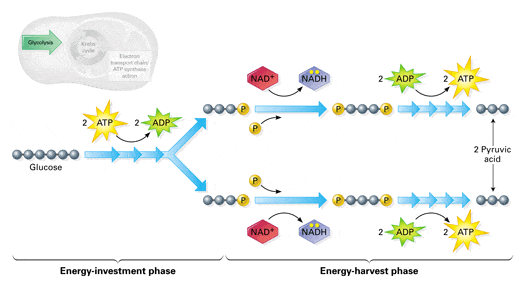
2. Krebs Cycle (Let?s make some carbon dioxide and get ready for the ETC!)
- Where does it occur?
- The Krebs Cycle occurs in the matrix of the mitochondria
- What are the reactants?
- The Krebs Cycle uses 2 Acetyl CoA (each with 2 carbons), a 4-carbon acceptor molecule that powers the cycle, 8 NAD+ and 2 FAD that will become electron carrier molecules, and 2 ADP + P that will become 2 ATP, and 6 O2 that provide necessary oxygen (remember, Krebs Cycle is aerobic)
- What happens to the reactants?
- After the two pyruvic acids is converted to acetyl CoA, 2 carbon dioxide molecules are produced, then the 2-carbon Acetyl CoA attach to the 4-carbon acceptor molecule (one at a time) and go through a cycle where they produce CO2 and electron carrier molecules
- What are the products?
- In total, 6CO2 are produced by combining the carbons from the pyruvic acids with the oxygen molecules, as well as 8 NADH and 2 FADH2 electron carrier molecules, and 2 ATP that the cell can use for energy
- Note: the 4-carbon acceptor molecule does not change and merely returns to its initial state to accept another Acetyl CoA in another round of the Krebs Cycle
- What?s next?
- All the carbons are now taken care of and have become carbon dioxide, so all that?s left from the initial glucose are the hydrogen atoms and electrons on NADH and FADH2,which go to the ETC for the most energy-rich part of cellular respiration
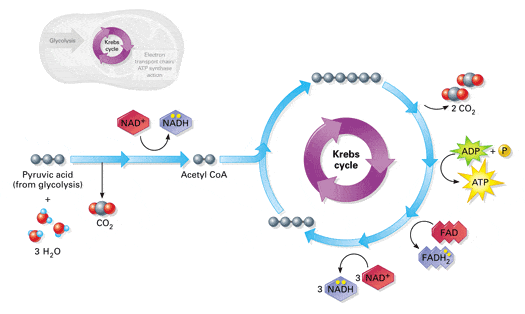
3. Electron Transport Chain (Let?s REALLY churn out that ATP now!)
- Where does it occur?
- The ETC occurs in the inner membrane of the mitochondria, within the cristae (folds of the mitochondrion)
- What are the reactants?
- The ETC uses 10 NADH electron carrier molecules (2 from Glycolysis, 8 from the Krebs Cycle), 2 FADH2 (from the Krebs Cycle), plus the 6 oxygen atoms from the original glucose molecule, and, most importantly, 34 ADP and P that are waiting to be combined by the ATP Synthase (an enzyme that makes ATP)
- What happens to the reactants?
- The electrons from the electron carrier molecules hop down the electron transport chain and the H+ ions from the electron carrier molecules to go across the inner membrane through active transport, then they charge back out through facilitated diffusion through the ATP synthase
- What are the products?
- The ETC makes 34 ATP (30 from 10 NADH, 4 from FADH2), returns the electron acceptor molecules (10 NAD+ and 2 FAD) so that they can be used again in cellular respiration, and combines the H+ ions with electrons and oxygen atoms to make 6H2O
- What?s next?
- Cellular respiration will keep occurring again and again unless the cell runs out of oxygen, in which place it will now perform fermentation to get the energy it needs to move enzymes and other stuff around and stay healthy
